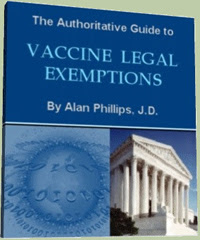Susanne Posel, Contributor
Activist Post
A new study to be published in the journal Proceedings of the National Academy of Sciences, says that those who were vaccinated with the swine flu vaccine have developed antibodies against many other strains of flu; including the H1N1 strain.
The swine flu vaccine, simply called the H1N1 vaccine, is the same one administered in 2009 to save the population from the pandemic that wasn’t.
The researchers of the study had hoped to develop a universal vaccine to be administered to everyone. They were attempting to protect against a broad range of flu strains and viruses, say Rafi Ahmed, study researcher and director of Emory University’s Vaccine Center.
Each year, a new vaccine for the flu is developed because 1) the potency of the vaccine wanes over time, and 2) the strains mutate so quickly that the quest for a universal vaccine has been simply out of reach for scientists.
Ahmed and his team studied 24 healthy adults who were given the swine flu vaccine in 2009. Just a week later, their blood was taken and analyzed.
The difficulty found in creating a universal vaccine stems from the make-up of the flu virus itself. It consists of a “head” that mutates and varies between strains, while the “stalk” of the virus remains intact and unchanged. Antibodies bind to the head of the virus, which means that the vaccine must be specific to the particular strain of flu it is protecting against.
Those participants that produced antibodies that adhered to the “stalk” of the flu virus were of particular interest to the researchers. Those people had antibodies that could serve as a basis for a universal flu vaccine, according to Ahmed.
B cells are responsible for producing antibodies. The researchers surmised that since the swine flu is so “new,” exposure to it has forced some people’s bodies to generate a rare form of B cell; one that can produce antibodies the “stalk” of the virus.
Ahmed is convinced that this rare B cell is their target for designing a universal vaccine.
Dr. Bruce Lee, an associate professor at the University of Pittsburgh Graduate School of Public Health, is encouraged, yet errs on the side of caution, saying that it still remains to be seen whether or not those with the rare form of B cell will be able to avoid the flu altogether.
The original form of swine flu suddenly appeared out of nowhere in 1976, on a military base in Fort Dix, New Jersey.
From this mysterious strain, one person died and 13 were hospitalized.
However, when the US government began their campaign to vaccinate the entire country, 500 cases of Guilian–Barre syndrome (GBS) spread throughout the population causing 25 deaths.
The deaths associated with GBS as a direct result of the swine flu vaccine were caused by an immunopathological reaction to the chemicals that made up the vaccine.
Building from the fear within the American public, health officials began mass vaccinations. Even President Gerald Ford not only mandated all Americans be vaccinated, but was publicly vaccinated to quell the concerns of citizens about the dangers of the vaccine itself.
 This endeavor cost taxpayers $135 million and, in the end, the US government suspended the vaccine program on December 16th after 54 cases of GBS surfaced across 10 states. By this time, 24% of the population had been vaccinated.
This endeavor cost taxpayers $135 million and, in the end, the US government suspended the vaccine program on December 16th after 54 cases of GBS surfaced across 10 states. By this time, 24% of the population had been vaccinated.
The “pandemic” in 2009 resulted from the UN and the US government began spreading disinformation about the so-called “swine flu pandemic”. This “plague” killed 15,000 people – not enough to classify it as a pandemic.
The safety of the vaccine came into question when a study was published in the journal Public Library Sciences One which stated that children who had been administered the H5N1 vaccine with the ingredient Pandemix, were likely to develop narcolepsy, a sleeping disorder.
Squalene, a dangerous component, was also found in the swine flu vaccine. In a study conducted in 2000, and published in the American Journal of Pathology, squalene reportedly triggered rheumatoid arthritis in rats. This also called into question the use of adjuvants in vaccines and their links to chronic inflammatory diseases.
Squalene causes the human body to attack the immune system, causing autoimmune diseases in animals, according to data in more than two dozen peer-reviewed scientific papers, from ten different laboratories in the US, Europe, Asia and Australia.
The popularity of vaccines has waned because of the information about the deadly toxins in the vaccines themselves that are more of a threat than the virus they purport to protect against.
More people have suffered because of reactions to the compounds in vaccines than have succumbed to the viruses that are paraded in the mainstream media as deadly and life threatening.
Now, researchers have discovered a possible “missing link” with the rare B cell to produce a universal vaccine.
As history tells us, the agenda seems to be that the priority is to get as many people vaccinated as possible. US government and health agencies time and time again ignore the data showing how dangerous vaccines are. And the general public’s memory is all too short.
And so the mass vaccinations just may have found a new start with this discovery.
If researchers are successful, perhaps the original plan devised in 1976 to vaccinate everyone will be achieved.
Susanne Posel is the Chief Editor of Occupy Corporatism. Our alternative news site is dedicated to reporting the news as it actually happens; not as it is spun by the corporately funded mainstream media. You can find us on our Facebook page.
linkwithin_text=’Related Articles:’



Be the first to comment on "After Swine Flu Failure, New Study Inspires Scientists to Develop Universal Vaccine"